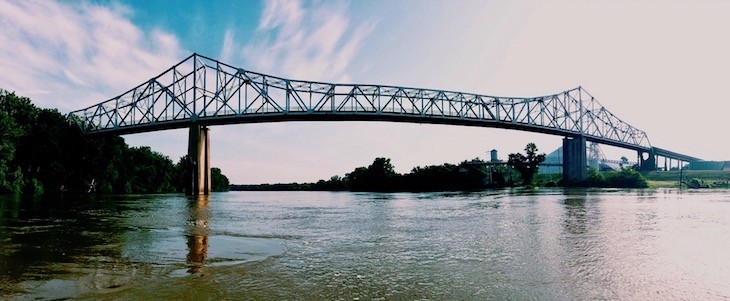ASU dominates Deep South Conference engineering competition
by May 9, 2019 6:21 pm 463 views

Tristin Phillips spent a lot of time on the farm during his youth in Bismarck. A wide variety of machines used on the farm needed to be fixed and he spent countless hours welding and tinkering with different tools.
These experiences helped the Arkansas State University senior in the recent Deep South Conference, a civil engineering competition. The civil engineering major captained the ASU team that took first place in bridge design. The win was gratifying after several years of falling short at the competition, Phillips said.
“It felt good,” he said. “ASU always does well at this competition. It was nice to be a part of it. We got a great result this year.”
Twenty students in the ASU civil engineering program competed at the conference held in Ruston, La. ASU is one of 14 universities in Deep South, which conducts a series of competitive civil engineering activities to test the students’ design abilities, construction and usability skills, teamwork, and understanding of their chosen field in conjunction with an annual meeting. ASU has won five of the last seven regional competitions, according to the school.
In addition to the first place overall finishes in the steel bridge and surveying competitions, the ASU students scored third in the sustainable doghouse competition, Dr. Jason Stewart, student chapter faculty adviser and director of civil engineering in the College of Engineering and Computer Science, told Talk Business & Politics.
Phillips’ steel bridge team also included Ronald “Drew” Slaven of Bono, Collin McCrary of Harrisburg, Austin Petty of Cabot, and Adam Weiner of Little Rock.
The regional win qualifies the team to enter the national competition at Carbondale, Ill., May 31-June 1. In addition to first place overall, the steel bridge team also scored sub-category first place awards in lightness, aesthetics, stiffness, economy and efficiency, along with a second place in construction speed.
Teams from the schools are given a “real life scenario” in which they must design a bridge based on set criteria, Phillips said. There are six points on the bridge that could be tested for weight bearing capacity and the team doesn’t know which spot will be chosen until they arrive at the competition. A monetary amount for the bridge’s construction is also set. Projects are judged by flexibility, looks, ability to bare weight loads, how much the bridge weighs, and other factors.
The hardest part is fabricating the model that is used in the competition, he said. A lot of students in the program are excellent in the classroom, but don’t have a lot of experience using tools and building things with their own hands, he added.
His mentor echoed those sentiments.
“It’s one thing to understand concepts in the classroom. It’s another thing to create something that is functional in the real world,” Stewart said.
Stewart took over the program several years ago and knew it would be a challenge for him. ASU students had traditionally performed well at the competition under the guidance of former program director Dr. Tom Parsons.
Stewart was groomed by Parsons, who told Stewart the only way to understand how to compete at the conference was to go there and learn first-hand.
“Dr. Parsons had a real passion for structural engineering and it showed through his students,” Stewart said.
All Deep South schools must compete in the Daniel W. Mead professional paper competition in order to be eligible for awards in any other event. Those papers are submitted to the national American Society of Civil Engineers (ASCE) group as well as the regional conference. One student from each school writes the paper on a new topic each year and makes a five-minute oral presentation.
Other regional events are sponsored by ASCE and the Deep South Conference, including the sustainable doghouse and surveying competitions. ASU had several other teams that placed in the competition.
Terry Walker of Paragould captained the first place survey team. Team members were Sydney Allgeier of Corydon, Ind., Joshua (Josh) Hurd of Bono, and Slaven.
The third-place sustainable doghouse team included Ian Gates of Maumelle (captain), Ziyad Almalki of Makkah, Saudi Arabia, Patrick Leppold of Mountain Home, and James Ketchum of Heber Springs.
Paige Leissner of Cabot, secretary of the ASCE student chapter, wrote the Mead competition paper on how the ASCE’s code of ethics on diversity and inclusion in the industry can benefit the profession and student chapters.
Sara Ford of Paragould was the concrete canoe team captain.
ASCE also sponsors the concrete canoe competition, while the American Institute of Steel Construction sponsors the steel bridge competition.
Other Deep South Conference schools included UT-Martin, Memphis, Ole Miss, Mississippi State, UALR, Jackson State, LSU, Southern, Louisiana Tech, New Orleans, McNeese State, Christian Brothers and UL-Lafayette.
